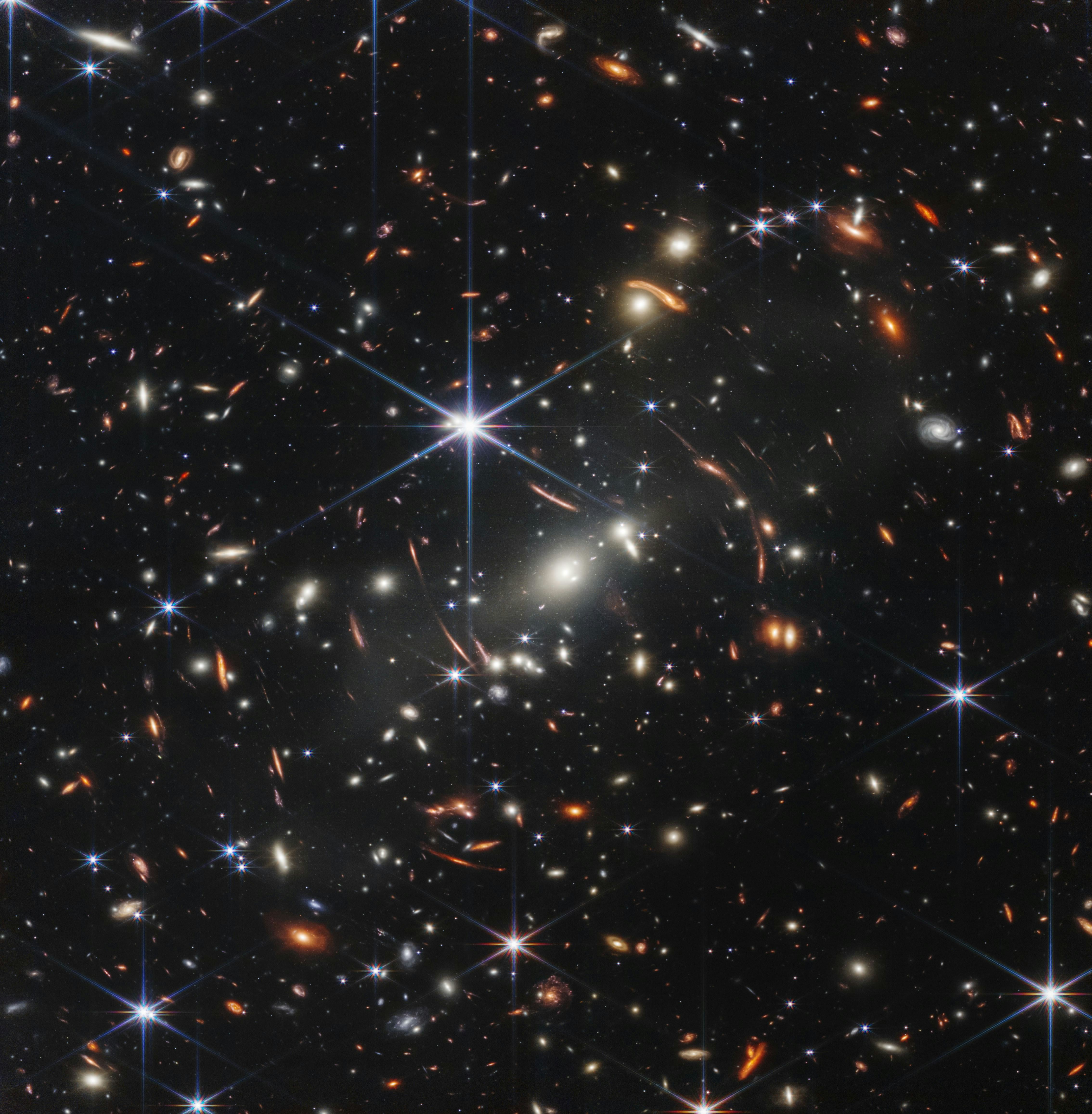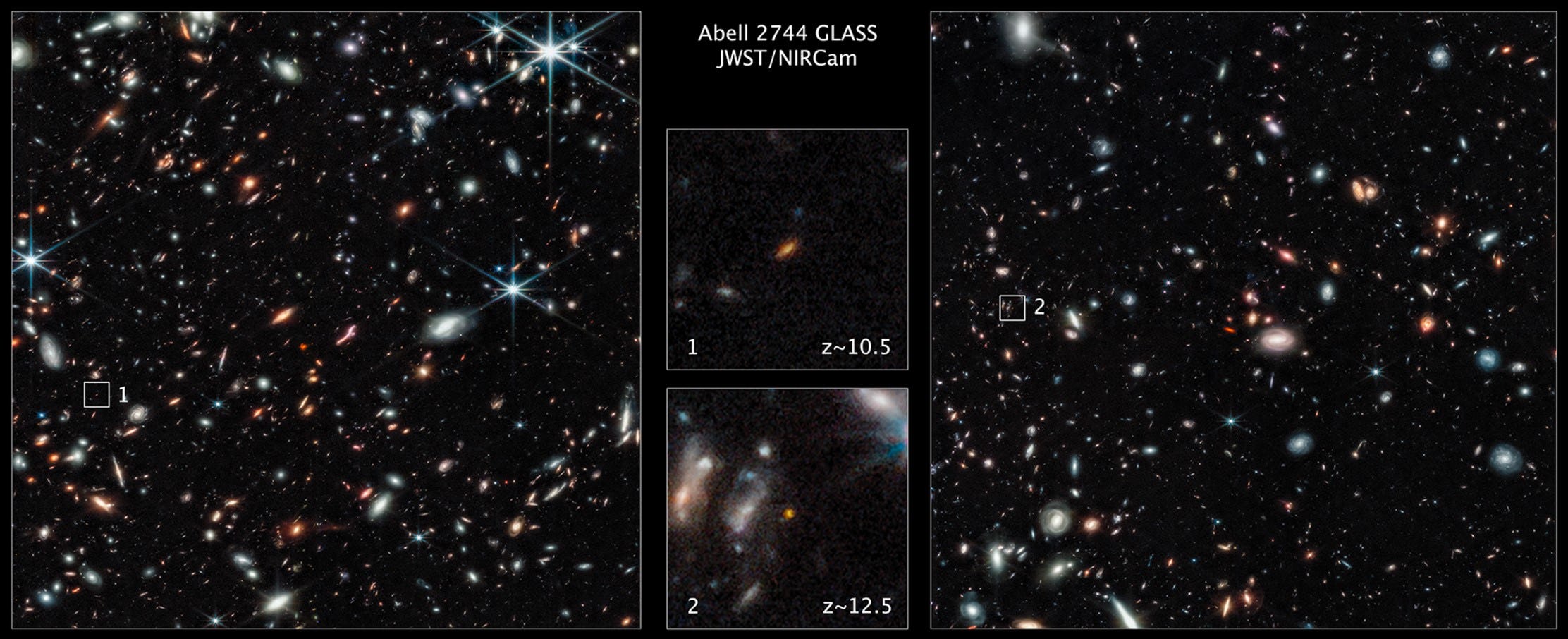
Just five months after the James Webb Space Telescope (JWST) mission debuted its first Deep Field and the ancient light within, NASA announced the sight of two exceptionally bright galaxies from the early Universe — brighter than any should have been at the time.
For decades, astronomers awaited the promise of a high-caliber telescope that could see beyond the limits of the Hubble Space Telescope. Initial findings from a JWST program, called GLASS (short for Grism Lens-Amplified Survey from Space), suggest these two faraway galaxies are about one-hundredth the current age of the Universe.
New data on these galaxies can shape our understanding of the early stars and their archaic light. “With Webb, we were amazed to find the most distant starlight that anyone had ever seen," astrophysicist Rohan Naidu says in a recent NASA announcement. Naidu authored a research paper about these observations, published Thursday in the journal Astrophysical Journal Letters.

The galaxies are an enigma, because they’re old and bright at a time when most galaxies were small and dim. If astronomers think of them in much the same way they ponder younger galaxies, “we immediately jump to the conclusion that they are very massive,” astrophysicist and study co-author Garth Illingworth said on Thursday during a NASA teleconference.
“One of the issues that’s now being widely discussed is, there’s something very different about these early galaxies,” Illingworth added. The primordial stars in these galaxies are creating an abundance of light through sheer size or number. It’s possible this new research “opens up a whole new question about the nature of stars” at cosmic dawn.
The Universe lent a helping hand at the galactic revelation, when JWST peered into the constellation Sculptor. The new observatory caught light magnified by the intense gravitational lensing of a massive galactic cluster called Abell 2744, making the light from these two early Universe objects appear from billions of light years behind the dense magnifying object.
The estimates for the ages of these galaxies is exciting, even though astronomers must wait until at least the next cycle of JWST observation time to confirm their ages.
Up until now, research suggests they are from 450 and 350 million years after the Big Bang. That’s quite soon after the event that spawned the visible universe; for reference, the Universe is roughly 13.8 billion years old.
Confirming these ages could make the 350 million-year candidate, called GLASS-z12, the oldest-known galaxy in the Universe. That’s 50 million years older than the previous record holder, a galaxy called GN-z11 spotted 400 million years after the Big Bang.
But a claim like that requires scrutiny. To that end, astronomers hope to use a special capability found in all four JWST instruments to determine the truth.
Astronomers will use spectroscopy to back up their educated guesses, now that they have extracted several interesting objects from this first surveying phase. Spectrographs can get more precise information about the early Universe objects, and help astronomers to reinforce distance data and learn about the compositions of these galaxies.
JWST announced its call for Cycle 2 proposals on Tuesday, and the team behind the GLASS program will submit their requests for spectroscopic follow-up on the telescope, hopefully getting a chance to parse through the light of these ancient galaxies and seeing what revelations appear in their cosmic fingerprints.







